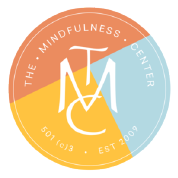Dear Yoga Teachers,
As teachers, we use words as a primary tool for conveying information to our students. As yoga teachers, awareness of prana is integral to the practice that we teach. Therefore, it is important that we understand the prana of the words we use in teaching. Words are a way of sharing energy with others, and of changing others energetic state. Words can be used to either close the heart or open it, or to close the mind or to open it. Since yoga is the practice of opening the mind, heart and body to connect, ours is a job of sharing this gift of an open energetic state. The words that flow from us in this open state are the key tools that we use to share the teachings of yoga.
We are all aware of the power of words to affect people emotionally, and alter our state of being. You’ve felt it when someone was critical of you or said, “hurtful” words. And you’ve felt it when people have said kind words to you, words that “made you feel good”. These shifts in emotional state are accompanied by actual shifts in our energetic state – part of what yogis refer to as “prana”. Most of us are aware that our biochemistry reflects our emotional state. However, as a scientist at the Veteran’s Affairs Medical Center, I measured changes in the electromagnetic fields of the body reflecting shifts in mood, sensations, and states of consciousness. Shifts in our energy fields can be extremely sensitive and reactive to environmental influences. Words can stop us dead in our tracks, leave our hearts pounding, or they can invite us and empower us towards growth, connection and greater self-awareness. Words can also have subtle effects, barely entering the consciousness of our students, yet helping them to balance, ground, connect or open deeper into their practice.
The words that we use while we are teaching yoga are as significant to our students as the postures and moves that we invite them to explore. It is important to choose words that meet the goals of yoga. Consider first what it means to teach yoga. Some of the concepts involve empowerment – empowering others on a journey of self-discovery. Yoga Alliance says yoga is “guidance for enriched living”, and “higher awareness and fulfillment”, “the complete experience of our essential Spiritual Self “, and Swami Ramananda says, “the science of self-mastery “. Mindfulness is also a part of yogic teachings. Jon Kabat-Zinn defines mindfulness as “paying attention in a particular way: on purpose, in the present moment, and non-judgmentally.” I define mindfulness as “a state of curious awareness of the experience of being”. Teaching yoga mindfully involves being aware of the effects of our words on the experience of our students, in order to facilitate greater awareness and fulfillment through their practice. We use our words to invite a curious state of awareness, as our students explore movements and sensation through their bodies.
Given that we are teaching others to become more aware of themselves and empowering a higher level of consciousness, it is important that we accept and invite our students to discover their own practice. It’s a fine line to recognize a student who doesn’t understand what you are suggesting, versus a student who is modifying their practice to suit their personal needs. It’s important to know the difference. If you are not sure, ask your student.
When I travel, I attend yoga classes wherever I go, exploring the different teachings and meeting other yogis. One of the phrases that I hear from novice teachers is “I want you to…” My recalcitrant brain responds in my head, “Who cares what you want. Aren’t I here to learn about my ‘essential Spiritual Self’?” Truly, what the teacher wants is not the point of a yoga class. The wants of our personal egos are best resolved on our own mats. Rather, use permissive language to invite students to follow along with your well-considered and knowingly inspired class. Our purpose is to invite the student to consider what they want to do, which requires the introspection we aim to teach. Permissive language further invites a sense of opening, curiosity, and self-awareness – and that is mindful yoga.
Hypnosis is a field that pays close attention to word choice. In hypnotherapy, words are the tools of the trade. Dr. William Kroger points out the great similarities between hypnosis and yoga in his seminal book on Clinical and Experimental Hypnosis in Medicine, Dentistry, and Psychology. What we learn in studying hypnosis is how to use words to alter someone’s state of consciousness and enhance their capacity to respond to suggestion. Without necessarily knowing it, effective yoga teachers have mastered the art of hypnosis, and similarly use that skill to enable transformation and enlightenment in their students. I have seen and taught classes with hundreds of people in them, with everyone in the room doing essentially whatever I suggest. The hypnotic trance of a good yoga class is truly a powerful tool, to be used humbly and consciously.
In addition to using permissive and inviting language, the following are some of the word tools to consider in effective mindful yoga. Remember, all words have a place and a purpose in our communication. The skill is in applying them with intention. Consider the energy of your words as you speak. This is an essential part of effective yoga teaching, and a practical part of all communication.
- One of the most commonly misunderstood words is the word “Try”. The word “Try” implies the possibility of failure. When the brain hears “Try”, it elicits the energy of defeat. One of the first things that I learned in studying hypnosis was, don’t try. Just do it. As wise Yoda, the Jedi Master, said to his student, Luke Skywalker, “There is no try.” Rather than saying try to balance in Ardha Chandrasana, suggest students simply step onto one foot, extend both arms and the other leg into the air, and gaze towards the ceiling. Your students’ practice will reflect your confidence.
- Words such as “sort of”, “kind of” or “just”, diminish the power of your teaching and your student’s practice. Similarly, “begin to” implies that they are not doing it already – as in, “Begin to breath”. Imagine the difference between a teacher who says, “Sorta, just kinda begin to turn to the back of the room in a twist.”, or one who says, “look over your shoulder as you turn to the back of the room”. Your confidence is contagious. Share it.
- Don’t say, “Don’t”. The brain doesn’t hear the negation. When you tell people what not to do, the image that you are creating in their minds, and the energy that you are sharing is different from your intention. Instead, describe the prana of the move you are suggesting, and the steps to get there. If you must describe a potential problem with a pose, do so while students are watching, and not in the pose where they could hurt themselves. (Beware of putting your own body out of alignment for purposes of demonstrating.)
Consider the analogy of the pothole. We want to know that the pothole is there, and to stay focused on the path around it. The same is true in yoga. We want our students to be aware of misalignments, and stay focused on the path to success. The most powerful way to guide your students safely and effectively is to use words to guide them by suggesting what to do.
- The words “should”, “must”, “have to”, “got to”, and my all-time favorite, “should have”, deserve honorable mention here. The effect of these words is to create either resistance or guilt. These words are not part of mindful yoga teaching – and they are far overused elsewhere. How can we invite a journey of self-exploration and discovery, when we are telling people what they should and should not do? As Barbossa in Pirates of the Caribbean says to Miss Turner when welcoming her onto the Black Pearl, “the code is more what you’d call ‘guidelines’ than actual rules. “ We are teaching guidelines, not rules. “Get to” and “may” are powerfully inviting. Take the “should” out of your teachings, and instead allow, suggest, or simply state the next move.
- Yoga has proven to have many therapeutic benefits. One of the two key ingredients in the practice of mindful yoga is body awareness – intentional focus on sensations of the body. This interoceptive element of the practice builds nerve networks (along the vagus nerve) from the brain to the body, and back again. These nerve networks enable us to coordinate our movements and functions (like healing). When a yoga teacher tells a student to “drop” their knee or their foot, the hypnotized brain would literally drop it, even if it meant the foot crashing to the floor from several feet in the air. Most students don’t drop their knees or hips when they hear this. But by doing something other than what you suggested, their brain becomes less suggestible. The hypnotic connection between teacher and student is diminished.
When a teacher suggests that students drop a body part, students miss the opportunity to enhance interoceptive connection along neural pathways between mind and body. Another reason to mindfully place body parts, rather than dropping them, is that muscles grow during the “eccentric” or “negative” phase of physical movement. When we place rather than drop a body part, we engage the muscles to develop coordination. When you tell your students to “place” their knee on the floor, or “lower” their hips, there is an element of intention – conscious focus – on moving the body. The conscious intention of placing a body part literally helps build nerve networks and muscles, cultivating coordination, self-regulation, and self-awareness.
- The second active ingredient of mindful yoga is awareness of the breath. I could write an entire book on the importance of breathing and teaching others to attend to their breath. If you are attending to your breath and your students’ breathing then you are teaching yoga – for it is the breath that connects us with all else. When we are focused on the spatial relationship between breath and self, the actual substance of the breath itself, then we are activating the same part of the brain as when we are experiencing a sense of connection with other. Some call this sense of connection love, others call is compassion. Sense of that-which-we-are-breathing helps grow our ability to sense both.
- I love this one: “Take one more breath”. Then what?? It may be subliminal, but one option is panic. As the student’s brain rewrites the script to avoid panic, they are disconnecting from you and your teachings. This is all extremely subtle, and so relevant to our teachings. We are teaching people, in a mindful state of curious awareness, to pay close attention to the subtlest experiences of being in order to recognize the sense of connection! Breath deeply. Keep doing it! Take many more breaths. And keep sharing the joy of mindful yoga through your mindful use of words.
Thank you for considering my words. All of our words make a difference and flow forth from our own energy. Note the words that you use in your own mind, and in your own practice. Your personal practice is the greatest teacher. When you are in the flow, your mind, heart and soul open and connected, then your words flow from that source and you share that energy with your students. All manifestation is a continuum of conviction. The conviction that you have will manifest in your students.
Most of all, thank you for sharing the wisdom of mindful yoga with others. I look forward to experiencing your class and your teachings! Namaste.

Deborah Norris, Ph.D.
In 1996, Debbie was diagnosed with severe fibromyalgia, which left her in chronic pain; doctors said there was no cure and nothing could be done. Debbie, a research scientist, began researching the underlying causes of her condition and took up practices to reverse these causes. Debbie began doing things to gradually increase her physical, mental and emotional well-being, including gentle yoga for the physical pain, nutritional changes to increase her energy and meditation to relieve stress. By incorporating these practices, Debbie reversed her condition and returned to an active, healthy life. After an accident in 1999, Debbie suffered a traumatic brain injury and was diagnosed with seizures, impaired vision and chronic headaches. Once again, Debbie researched ways to heal herself using mind and body practices, and once again, Debbie was able to heal herself and live a healthy life free of seizures and pain. In her practice, Dr. Norris draws on both her scientific research and ancient wisdom to integrate lifestyle elements of meditation, physical exercise, spiritual development, relaxation therapy, nutrition and herbs for maximal health and happiness!


Social Media
Most Popular


Mind-Body Influences of a Solar Eclipse

Journey to Well-Being


